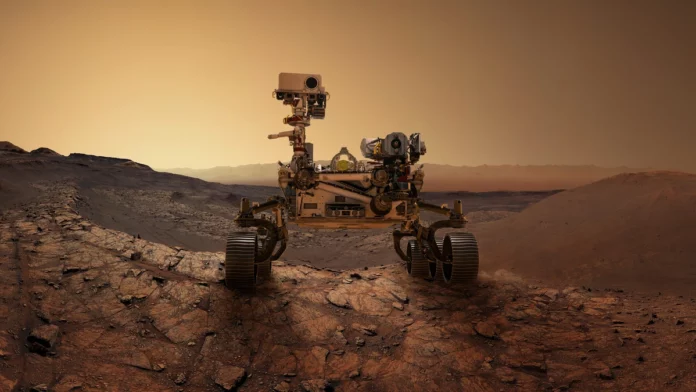NASA recently sent to “another world”, the most advanced and biggest rover ever that landed on Mars after having completed a 203-day journey. The rover traveled 293 million miles which is equivalent to 472 million kilometers. NASA’s Jet Propulsion Laboratory, Southern California confirmed the same.
More about the Touchdown
Equipped with the latest technology, the Mars Perseverance Rover mission was launched on July 30th, 2020 from the Cape Canaveral Space Force Station, Florida. The 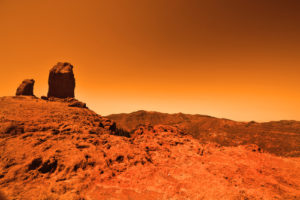 Mars 2020 mission is perhaps a very ambitious approach wherein the main objective is to get samples from the Red Planet and bring them back to Earth.
Mars 2020 mission is perhaps a very ambitious approach wherein the main objective is to get samples from the Red Planet and bring them back to Earth.
Quoting Steve Jurczyk, the acting NASA Administrator, “This landing is one of those pivotal moments for NASA; The Mars 2020 Perseverance mission personifies the human ideal of persevering toward the future and will help us prepare for human exploration of the Red Planet”.
Similar to the size of a car, the 1,026-kilogram robotic geologist and astrobiologist will be subjected to many weeks of testing and trials prior to the exploration of the Jezero Crater.
NASA Mars mission timeline- EDL
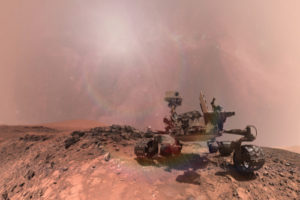 Video released for Mission to Mars NASA, records or chronicles the significant moments when major milestones are reached. Right from the time when the rover enters, descends, and lands (EDL) on the Red Planet when the spacecraft “plummeted, parachuted and rocketed” towards the Mars surface.
Video released for Mission to Mars NASA, records or chronicles the significant moments when major milestones are reached. Right from the time when the rover enters, descends, and lands (EDL) on the Red Planet when the spacecraft “plummeted, parachuted and rocketed” towards the Mars surface.
The rover had a microphone that did record the so-called first sounds of Mars. Right from the time the parachuted inflated, the camera covers every detail of the descending process when it finally lands at the crater.
At a distance of 7 miles from above the surface, the descent is very carefully captured in detail. The presence of high-definition cameras make the recording even better and made the Mars rover pictures possible.
 Interestingly, when you are around 10 seconds into the video recording, you get to hear a Martian breeze for a couple of seconds. Simultaneously, you also get to hear the sound of the Rover on Mars operating on the surface.
Interestingly, when you are around 10 seconds into the video recording, you get to hear a Martian breeze for a couple of seconds. Simultaneously, you also get to hear the sound of the Rover on Mars operating on the surface.
The world got to see the closest possible views of the Red Planet with the commencement of the descent of the spacecraft when it enters at a height of 12,500mph, the upper atmosphere of the Red Planet.
Videos allowed spectators to enjoy the spectacular Mars rover landing on the crater.
What is the main objective of Mission to Mars?
 One of the main objectives of the Mars rover is astrobiology. This means searches will take place to look for signs that indicate the presence of ancient microbial life.
One of the main objectives of the Mars rover is astrobiology. This means searches will take place to look for signs that indicate the presence of ancient microbial life.
The Space rover will “characterize” the geology of the planet and find out the type of climate that existed earlier on the Red Planet. This will undoubtedly help us to know or provide signals of human existence on the planet. Collecting Martian rock or regolith is also of utmost importance. Its success will determine NASA Mars manned missions.
More about the Jezero Crater- the site of Mars mission
 The crater is 45 kilometers in width, roughly 28 miles. It is located on the western edge of Isidis Planitia. This is an impact basin that is located towards the north of the Martian equator. Scientists are of the opinion that some 3.5 billion years ago, this crater had a river delta flowing through it and that the crater has water up to the brim.
The crater is 45 kilometers in width, roughly 28 miles. It is located on the western edge of Isidis Planitia. This is an impact basin that is located towards the north of the Martian equator. Scientists are of the opinion that some 3.5 billion years ago, this crater had a river delta flowing through it and that the crater has water up to the brim.
How does the Mars Perseverance Rover mission get power?
A Multi-Mission Radioisotope Thermoelectric Generator (MMRTG) provides the much-needed heat and electricity as part of the power system. It allows the rover to explore the Jezero Crater.
There’s an ongoing partnership between the U.S Department of Energy and NASA. Due to it, the development of power systems was made possible for civil space applications.
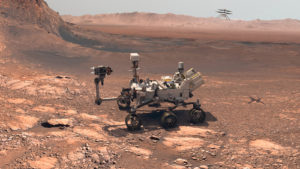 This mission witnessed the presence of the maximum number of cameras that were “ever sent to Mars”. It was equipped with as many as “seven primary science instruments”. Also, the present is the complex system that allows for sample caching. As the rover scavenges through the crater, it will pick up samples on its way. Furthermore, the samples indicate the presence of microbial life from ancient times.
This mission witnessed the presence of the maximum number of cameras that were “ever sent to Mars”. It was equipped with as many as “seven primary science instruments”. Also, the present is the complex system that allows for sample caching. As the rover scavenges through the crater, it will pick up samples on its way. Furthermore, the samples indicate the presence of microbial life from ancient times.
According to JPL Director Michael Watkins, “Landing on Mars is always an incredibly difficult task and we are proud to continue building on our past success”.
The engineers in the project will test Perseverance through several tests and stages. They will be testing the subsystems, instruments, and subroutines. This process takes a couple 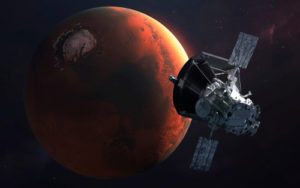 of months. Hence, they will be ready to place the helicopter for the flight test phase.
of months. Hence, they will be ready to place the helicopter for the flight test phase.
If these tests and deploying is successful, Ingenuity will add dimension to the mission to Mars and the search for microbial life from ancient times can begin on the Red Planet at the earliest.
Further Reading
